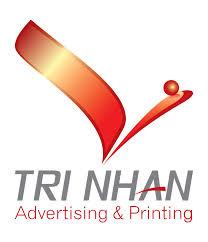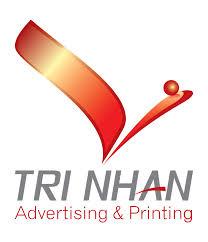The Solar Control Glass Market Share continues to rise as global demand for energy-efficient building materials grows across residential, commercial, and industrial sectors. As Per Market Research Future, the market’s growth is driven by increasing construction activities, urbanization, rising temperatures, and the global shift toward sustainable architecture. Solar control glass has become an essential material in modern building designs, helping reduce heat gain, optimize natural light, and improve energy performance.
Solar control glass is engineered to limit the amount of solar radiation entering a building, ensuring interior spaces remain comfortable without excessive reliance on air conditioning. By reflecting and absorbing solar heat, this glass helps maintain temperature balance and improves energy efficiency significantly. Its widespread adoption in office towers, shopping malls, airports, and residential complexes highlights its vital role in modern architectural solutions.
Market Dynamics and Key Growth Factors
The Solar Control Glass Market Share is influenced by several important factors. One of the most significant drivers is the rapid growth of the global construction industry, especially in urban regions. As cities expand and high-rise buildings become more common, the need to manage solar heat gain effectively becomes more critical. Solar control glass offers a practical solution by delivering both aesthetic appeal and functional energy efficiency.
The push for sustainable and green building practices is another powerful driver. Governments and environmental organizations are encouraging the adoption of energy-saving materials to reduce carbon footprints. Solar control glass fits perfectly within this initiative, offering improved thermal performance and helping buildings meet energy-efficiency regulations.
Climate change and rising global temperatures have also increased interest in solar control glass. In warmer regions, excessive heat inside buildings leads to higher energy consumption for cooling. With this glass, buildings can maintain cooler indoor environments, reducing energy costs and supporting long-term sustainability goals.
Technological advancements significantly contribute to the market’s expansion. Today’s solar control glass is available in a wide range of coatings, tints, and functionalities. Innovations like low-emissivity coatings, reflective layers, and integrated solar control technologies offer enhanced performance and design flexibility. Many manufacturers now provide customizable solutions to suit various architectural styles and climate conditions.
Additionally, the rise of smart buildings and integrated energy management systems is fueling demand for advanced glass solutions. Solar control glass plays a key role in smart façades, enabling buildings to optimize light and heat automatically through shading and thermal performance technologies.
Regional Insights
The Solar Control Glass Market Share varies across regions, influenced by climatic conditions, construction trends, and infrastructure development.
North America has seen steady growth due to rising adoption of energy-efficient construction solutions and stricter environmental regulations. As commercial construction expands, demand for high-performance glazing continues to climb.
Europe remains a dominant market, driven by long-standing commitments to sustainable building practices and advanced architectural designs. Countries such as Germany, France, and the UK are leading adopters of solar control glass in commercial spaces, residential buildings, and industrial structures. The region’s focus on reducing carbon emissions is a significant contributor to market growth.
Asia-Pacific is the fastest-growing region. Rapid urbanization, increased construction activity, and climate conditions that require effective heat management have led to heightened demand for solar control glass. Nations like China, India, Japan, and South Korea are key contributors, fueled by large-scale infrastructure development and government-led energy-efficiency initiatives.
Emerging economies in Latin America, Africa, and the Middle East are gradually adopting solar control glass as urban development increases. These regions experience high solar exposure, making solar control glass a practical and valuable investment for reducing cooling costs.
Competitive Landscape
The Solar Control Glass Market Share is competitive, with leading companies investing in research, product innovation, and advanced manufacturing techniques to strengthen their market positions. Manufacturers are focusing on:
-
Enhanced coating technologies
-
Improved durability and optical clarity
-
Customizable colors and tints
-
Integration with smart systems
-
Environmentally friendly production processes
Strategic partnerships with construction firms, architects, and real estate developers play a crucial role in expanding product adoption. As the construction industry evolves, companies offering innovative, energy-efficient, and aesthetically appealing glazing solutions are well-positioned for growth.
Applications and Industry Impact
Solar control glass is widely used in:
-
Commercial buildings
-
Residential complexes
-
Skylights and atriums
-
Automotive applications
-
Greenhouses
-
Industrial facilities
In commercial spaces, solar control glass enhances comfort, reduces cooling load, and creates visually appealing interiors. In residential buildings, it ensures better temperature regulation and lowers utility bills. In the automotive sector, it helps reduce cabin heat and enhances passenger comfort.
Solar control glass also contributes to sustainability certifications such as LEED and BREEAM, making it a preferred choice for environmentally conscious construction projects.
As global priorities shift toward energy-efficient infrastructure, the demand for solar control glass will continue to rise. With ongoing technological advancements and increasing consumer awareness, the market’s future outlook remains strong and promising.
Frequently Asked Questions (FAQ)
Q1: What is solar control glass, and why is it used?
A1: Solar control glass is designed to reduce solar heat entering a building while allowing natural light. It is used to improve energy efficiency, comfort, and temperature regulation.
Q2: What factors are contributing to the growth of the solar control glass market?
A2: Growth is driven by construction industry expansion, energy-efficiency regulations, rising temperatures, sustainable building trends, and technological advances.
Q3: Where is solar control glass commonly used?
A3: It is used in commercial buildings, residential structures, skylights, automotive designs, industrial facilities, and projects requiring temperature and light management.
More Related Reports:
Water Tube Industrial Boiler Market


